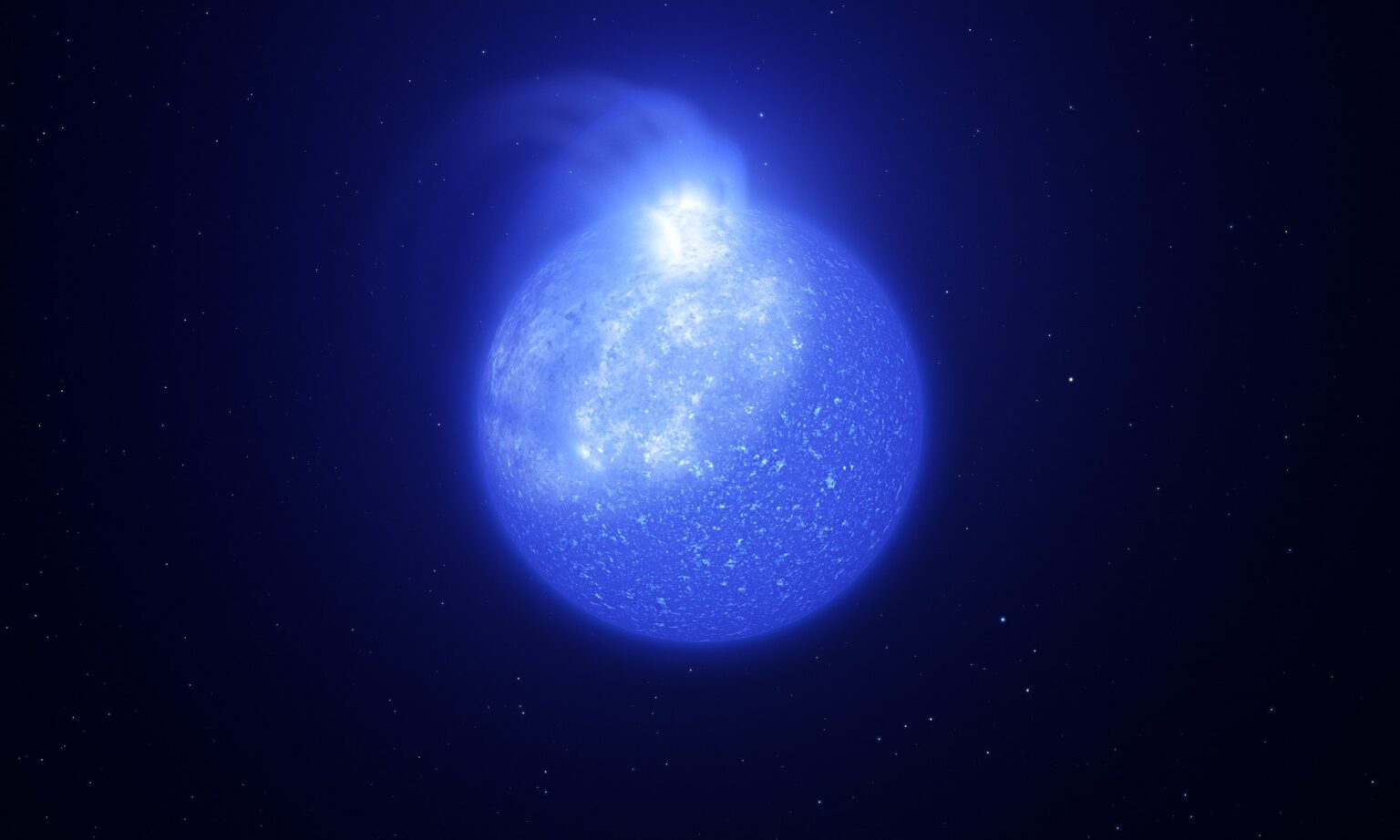Scientists used the TESS space telescope to study the star TIC 441725813. They have discovered that it is a subdwarf of spectral class B and is also pulsating.

Hot subdwarf
Astronomers used NASA’s TESS exoplanet transit satellite to study the star, called TIC 441725813. As a result, they found it to be a hybrid hot pulsating B-type subdwarf. The discovery was detailed in a research paper published July 25 on the arXiv preprint server.
In general, hot Class B subdwarfs (sdB) are objects from the extreme horizontal branch of the Hertzsprung-Russell diagram, consisting of helium cores and very thin hydrogen shells. They are compact celestial bodies, typically about half the mass of the Sun, with radii between 0.1 and 0.3 solar radii and effective temperatures between 20,000 and 40,000 K.
Two modes of pulsating stars
Astronomers are particularly interested in finding and characterizing pulsating class B subdwarfs (sdBVs), which exhibit two types of flux variations. The first one is associated with short-period pressure modes (p-modes) with pulsation periods of the order of minutes and amplitudes of pulsation modes reaching tens of mmag. The second is associated with long-period gravitational modes (g-modes) with pulsation periods of the order of hours and amplitudes of pulsation modes less than 10 mmag.
TIC 441725813, also known as TYC 4427-1021-1, is one of the brightest sdB stars discovered to date. Previous observations have found it to have an effective temperature of 27,200 K and suggested that it is probably a short-period spectroscopic binary.
Now, a team of astronomers led by Wenchao Su of the University of Toulouse in France has made photometric observations of TIC 441725813 with TESS, giving them more information about the nature of this star.
How the star TIC 441725813 rotates
A detailed analysis of the TESS light curves from TIC 441725813 allowed Su’s team to identify a rich array of features. In particular, they found low and high frequencies, a possible orbital signature of a companion, a g-mode pulsation spectrum with evidence of rotational splitting, and several p-modes that also show evidence of rotation.
In addition, based on the measured frequency splittings of the two types of modes in TIC 441725813, astronomers have estimated the rotation periods of both the core and outer shell. The core rotates very slowly with a period of at least 85.3 days, while the rotation period of the outer shell is about 17.9 days.
According to the authors of the paper, the results suggest that TIC 441725813 is a hybrid sdB pulser that demonstrates both g- and p-modes.
In addition, the researchers added that TIC 441725813 could be a short-period sdB-white dwarf binary system with an orbital period of about 6.7 hours, which could explain why the star’s shell rotates almost five times faster than the inner core. However, additional spectroscopic observations are required to confirm this hypothesis.
According to phys.org


